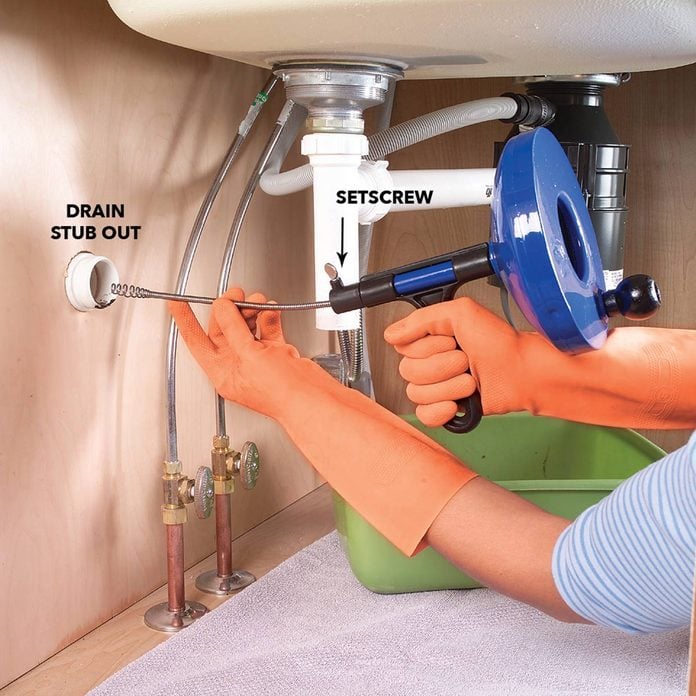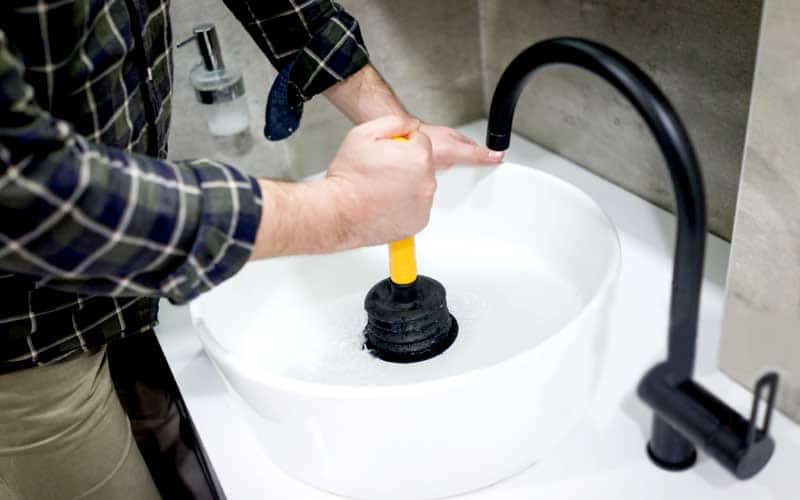Demystifying Kitchen Sink Drain Cleaning: 5 DIY Tips
Demystifying Kitchen Sink Drain Cleaning: 5 DIY Tips
Blog Article
We have found this article relating to Do It Yourself Plumbing Solutions directly below on the internet and figured it made perfect sense to write about it with you over here.

In this write-up, we will certainly be taking a look at five basic steps you might take to release your cooking area sink from blockages and save you from the discomfort and humiliation of managing a clogged up cooking area sink.
Obstructed cooking area sinks are among the most common water drainage concerns home owners deal with. As well as what's more, it's a undesirable as well as very awkward view. Picture mosting likely to the sink to do your meals and figuring out that the drainpipe is obstructed as well as water can not flow down conveniently.
Many clogged drainages are caused by food debris, soap, oil, and fat bits. They block the sink and also make it hard for water to drop the drainpipe swiftly. While it is appealing to put a call through to the plumbers, there are a couple of DIY hacks you could try initially prior to making that telephone call.
1. Baking Soda and also Vinegar
As opposed to utilizing any type of type of chemicals or bleach, this method is much safer and not dangerous to you or your sink. Baking soda and vinegar are everyday house products used for numerous various other things, and they can do the technique to your cooking area sink.
Firstly, get rid of any type of water that is left in the sink with a cup.
Then put an excellent amount of baking soft drink down the drain.
Pour in one mug of vinegar.
Seal the drainage opening and also permit it to opt for some minutes.
Pour warm water down the tubes to disappear other persistent deposit as well as bits.
Following this basic technique could do the trick, as well as you can have your kitchen area sink back. Repeat the procedure as high as you deem required to rid the sink of this particles entirely.
2. Try a Plunger
You can try making use of a bettor if the trouble is not from the waste disposal. Plungers are standard house tools for this event, and they can be available in helpful if you use them effectively. A flat-bottomed plunger is most ideal for this, yet you can make do with what you have is a toilet plunger.
Follow the list below simple steps to use the plunger successfully:
Secure the drainpipe with a cloth and also fill up the sink with some warm water
Place the plunger in position over the drainpipe and begin diving
Check to see if the water runs easily after a few dives
Repeat the process up until the water drainage is totally free
3. Perhaps it's the Garbage Disposal
In lots of situations, the obstruction might be due to a clog in the disposal. Usage pliers instead.
If this does not function, you can explore the following alternative to unclog your kitchen sink.
4. Make use of a Hanger
Utilizing a cable towel wall mount or a plumber's snake if you have one can do the method. All you require do is straighten out the wall mount to go down the drainpipe while you carefully pick out the fragments creating the obstruction.
Run hot water away after this to see how effective you were.
5. Usage Boiling Water
When faced with a clogged up sink, the first thing you must try is to pour boiling water down the drainpipe. That is about one of the most straightforward treatment to clogged up sinks and also drainages. Boiling water assists counteract the particles and debris causing the clog, specifically if it's oil, soap, or oil fragments, and in a lot of cases, it can flush it all down, and also your sink will be back to typical.
Do not try this method if you have plastic pipes (PVC) because warm water can melt the lines and trigger more damage. If you utilize plastic pipes, you may intend to stick to using a bettor to get particles out.
Using this approach, switch on the faucet to see just how water streams after putting hot water down the drain. If the obstruction persists, try the procedure once again. The blockage might be extra persistent in some situations as well as call for more than simply boiling water.
Final Words
Trying these few tricks can conserve you the costs of having a plumber examine it. Yet oftentimes, a plumber is what we need. In cases where you locate it tough to unblock the sink even after trying all these techniques, it may be time to leave it to the experts.
Contact specialist plumbing firms to fix your water drainage problems as well as various other various family plumbing requirements.
Blocked kitchen sinks are one of the most usual drain problems property owners face. Think of going to the sink to do your recipes as well as finding out that the drainpipe is obstructed as well as water can not stream down easily.
They block the sink and make it hard for water to go down the drain swiftly. When encountered with a blocked sink, the very first thing you ought to attempt is to put boiling water down the drainpipe. Boiling water assists counteract the bits and also debris causing the clog, particularly if it's oil, grease, or soap fragments, as well as in many instances, it can flush it all down, and your sink will certainly be back to normal.
How to Unclog a Kitchen Sink
Take the Plunge
Start your efforts by plunging. Use a plunger with a large rubber bell and a sturdy handle. Before getting to work on the drain, clamp the drain line to the dishwasher. If you don t close the line, plunging could force dirty water into the dishwasher.
Fill the sink with several inches of water. This ensures a good seal over the drain.
If you have a double sink, plug the other drain with a wet rag or strainer.
Insert the plunger at an angle, making sure water, not air, fills the bell.
Plunge forcefully several times. Pop off the plunger.
Repeat plunging and popping several times until the water drains.Clean the Trap
The P-trap is the curved pipe under the sink. The trap arm is the straight pipe that attaches to the P-trap and runs to the drain stub-out on the wall. Grease and debris can block this section of pipe. Here s how to unclog a kitchen sink by cleaning out the trap:
Remove as much standing water from the sink as possible.
Place a bucket under the pipe to catch the water as it drains.
Unscrew the slip nuts at both ends of the P-trap. Use slip-joint pliers and work carefully to avoid damaging the pipes or fasteners.
If you find a clog, remove it. Reassemble the trap.
If the P-trap isn t clogged, remove the trap arm and look for clogs there. Run the tip of a screwdriver into the drain stub-out to fetch nearby gunk.Spin the Auger
With the trap disassembled, you re ready to crank the auger down the drain line.
Pull a 12-inch length of cable from the auger and tighten the setscrew.
Insert the auger into the drain line, easing it into the pipe.
Feed the cable into the line until you feel an obstruction. Pull out more cable if you need to.
If you come to a clog, crank and push the cable until you feel it break through. The cable will lose tension when this happens.
Crank counterclockwise to pull out the cable, catching the grime and debris with a rag as the cable retracts.

As an avid reader on Fixing Typical Household Plumbing Problems, I assumed sharing that post was beneficial. Sharing is good. One never knows, you may just be helping someone out. Thank you for taking the time to read it.
Visit My Website Report this page